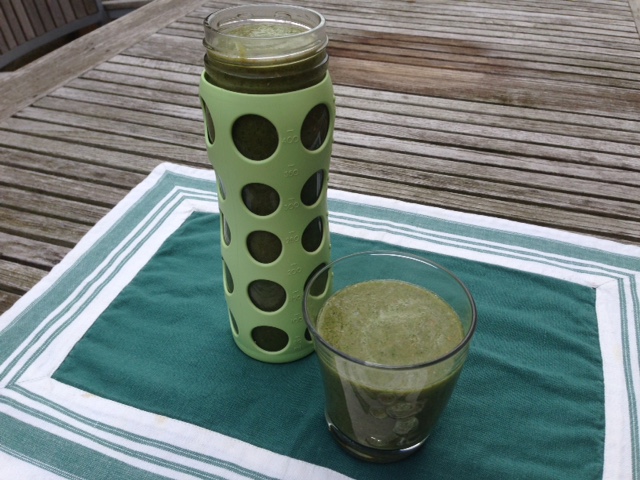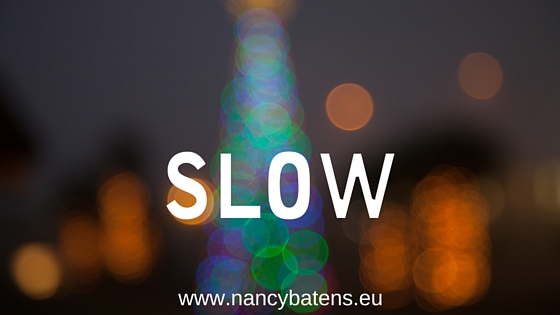During the stress management courses, I always mention the importance of having a strong buffer. If you take good care of yourself, you’re less prone to stress. One way to do this, is to eat well. If you subscribed to ‘Defeat your stress in 10 days’ you might remember tip 3: “Eat well and keep the stress down”. (If you haven’t it’s not too late: you can do it here.)
Often people say: I don’t have the time to have a healthy breakfast.
Excuse me, I disagree and… to prove that to you, I’ll give you 3 recipes I use myself. And they can all be prepared in less than 4 minutes!
1. Granola, yoghurt and fruit

Nothing smells and tastes like home made granola… It’s very easy to make. My recipe takes 5 minutes to mix and 15 minutes in the oven. That’s it. And the fact that your house smells lovely afterwards is a total bonus!
What do you see on the picture?
– 4 table spoons of granola
– 1 portion of yoghurt (I take soy yoghurt but you can take whatever you want)
– Fruit (in this case I took fresh raspberries but it can equally be a banana , an apple, a pear, …)
So how long does that take to prepare? 1 to 2 minutes, depending on if you need to cut up some fruit or not…
There are many recipes on the Internet to make your own granola. You can find the one I use here. I like it that there are no rules, you make your own variation depending on what you like: you always have a choice! One remark: I only bake it for 15 min. at 175°C
Other sources: Deliciously Ella, Uit Pauline’s keuken
2. Green smoothies

I’ve been drinking green juice for years. Green smoothies are not called this way because of their colour, but because they consist of fruit and leafy greens (spinach, salad, …). When I tell this to people, they look at me in disgust… Spinach? In a smoothie?
Yes, and actually, spinach is an excellent choice: if you add this to a banana, some strawberries etc… I promise you, you won’t taste the spinach AT ALL! This is not the case for all leafy greens so… for ‘beginners’ certain recipes are better than others…
And it ticks all the boxes:
– It’s quick: it usually takes me 2 minutes to make and 1 minute to clean the blender (also interesting…)
– healthy (you might even reach your 5 portions of fruits and vegetables in one go…) and… by adding some vegetables to your fruit, you decrease the sugar intake.
– And it’s yummy!
My usual combo?
– Spinach or lamb’s lettuce (both rather neutral)
– Half a cucumber
– Some celery (if you like it, you do taste it a bit)
– A banana (sometimes frozen – ideal solution when you have too many bananas that are getting too ripe… They also make the smoothie nice and creamy)
– A pear
– Some (frozen) raspberries
– (if necessary some water)
This is a ‘common’ one but it might depend on the season or what’s in the fridge…
You can also add lots of different ingredients and ‘superfoods’: chia seeds, nut butters, protein powders, whatever you like…
For inspiration I can recommend the following sites:
– Kris Carr: She has a digital recipe book with green juices and smoothies but there are also free recepties on the site
– Simple Green Smoothies: a couple of times a year they have a free challenge and they send you 31 recipes…
– Deliciously Ella
– Julie’s lifestyle (both in English and Dutch!)
3. Oatmeal

Another favourite of mine. It’s quick (my version takes 3,5 minutes), it’s healthy (reduces risk of colon cancer, good for decreasing cholesterol, risk of high blood pressure and risk of mortality from cardiovascular disease) and it’s yummy because of the frozen raspberries I add…
But my main reason for eating it is it keeps me full for a long time (which is very important when you have breakfast at 6.30 am).
My ingredients?
– 1 cup of oats
– 2 cups of unsweetened almond milk (or soy milk. Of course you can also use ‘normal’ milk.)
– frozen raspberries
How do I make it?
I put the oats and the milk in the microwave oven for 2 minutes 15 seconds. (I know some people will object to the microwave but… I want it to be quick… I’m sorry. You do what you feel is right for you). And after I’ve added the frozen raspberries, it goes in for another 1 minute 15 seconds…
That’s it! When I use the unsweetened milk, I add some stevia. When I use the ‘normal’ versions, I don’t.
I have to admit that I like it a bit less when it’s 30°C outside but let’s face it: that doesn’t happen very often…
In that case you can choose ‘overnight oats’: google it and you’ll find a lot of recipes: you put the oats with some milk or yoghurt in the fridge so they soak overnight and in the morning you add whatever you want… You can even take it to the office and have breakfast there…
I know this post is a bit longer than usual but… you have 3 recipes in return. Have fun experimenting and feel free to share other combinations or ideas in the comments below!
Enjoy!
If you liked the above, you can sign up for more Tips & Tricks here. Looking forward to hearing from you!




